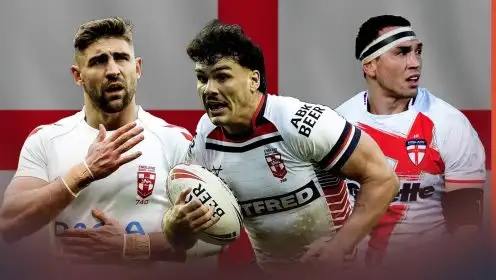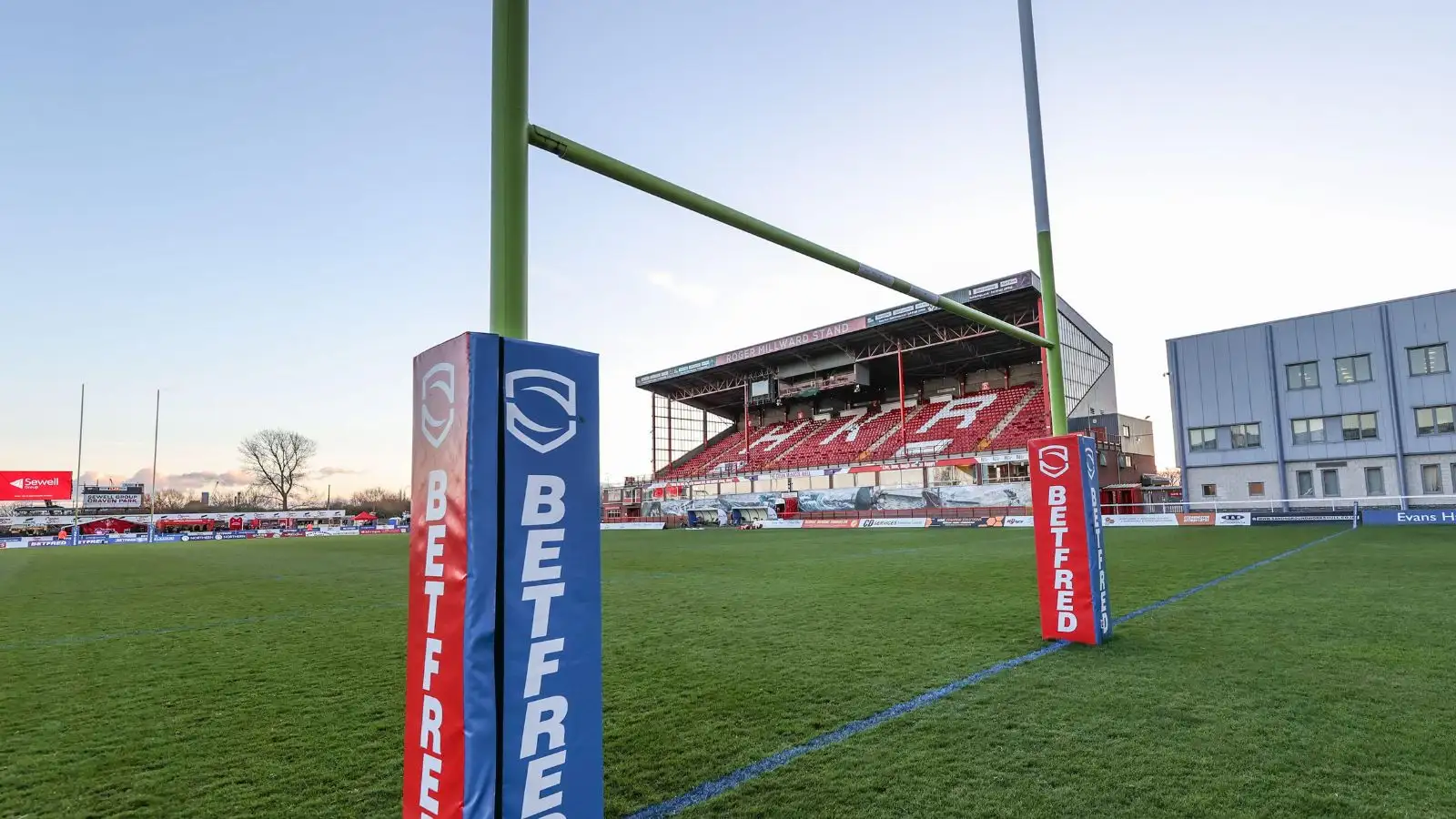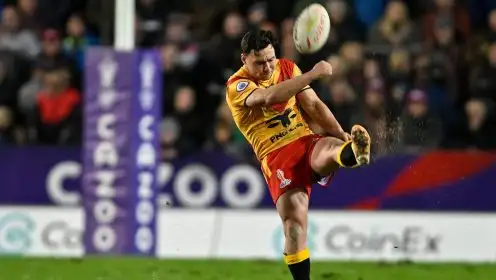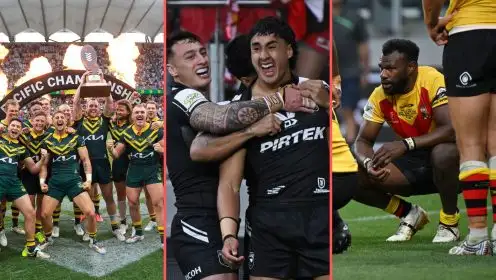NRL’s next expansion move will make it 50% bigger than Super League – Who could it be?
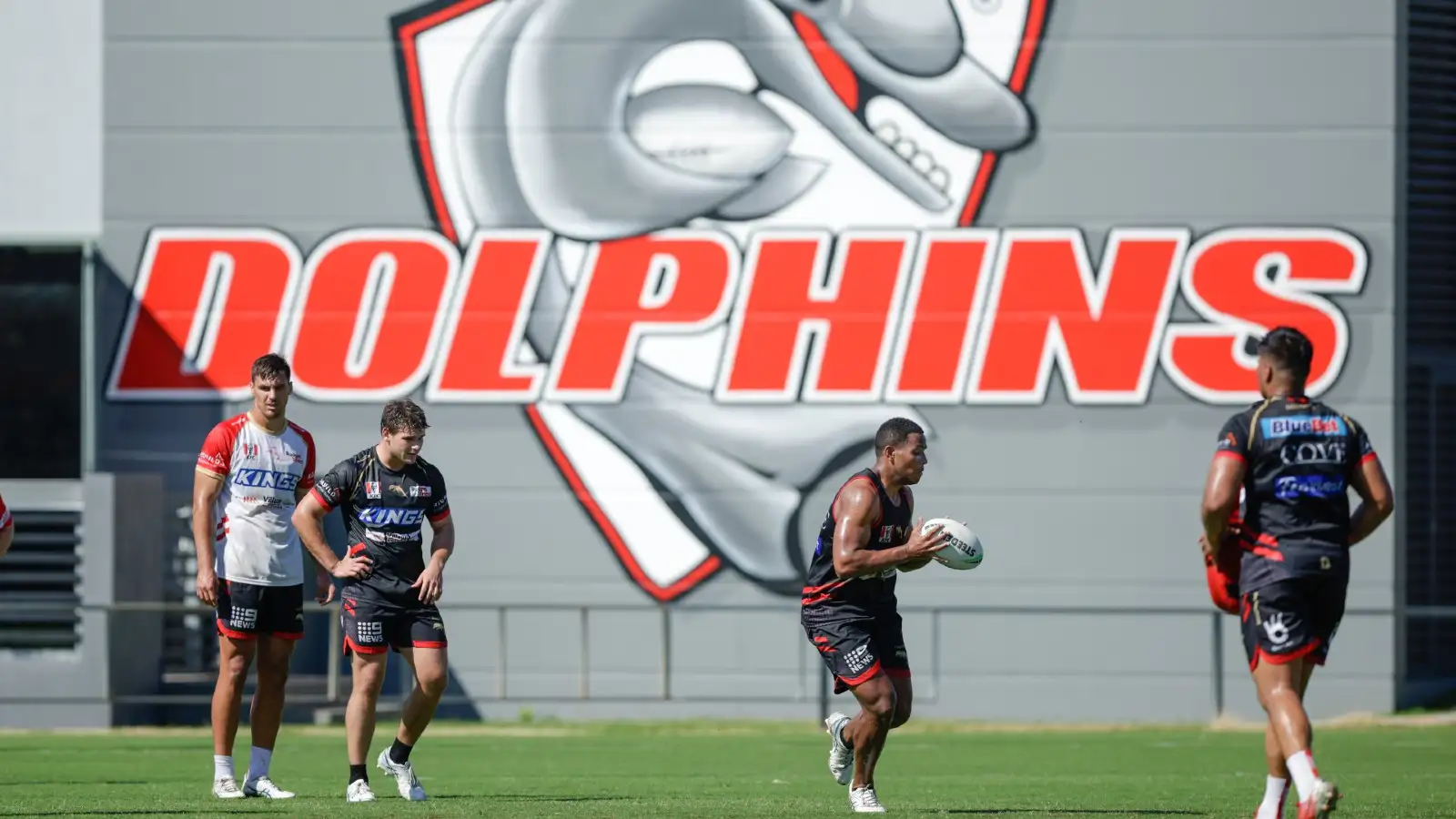
AAP Image/Russell Freeman
The impressive start to the NRL season by new club the Dolphins could accelerate plans to expand the NRL further.
It was revealed recently that the NRL hopes to expand to become a 20-team competition by 2030, while adding one more club to reach 18 would make it 50% bigger than Super League, which is being left behind in more ways than one by the world’s only other fully professional league.
The NRL’s latest broadcast deals mean they are set to collect an eye-watering $409m (c£219m) in media rights revenue per year, while the salary cap has risen to A$12.1m (c£6.5m) for 2023.
Despite constant changes to formats and structures, Super League’s salary cap has plateaued, and even decreased in comparison to the cost of living, and their most recent broadcast deal saw a significant drop in revenue, with negotiations ongoing to renew or replace that at the end of the year.
The only time Super League has attempted to expand its competition was in 2009, when Salford and Celtic Crusaders were added to the existing 12 teams to make it a 14 team competition. But it reverted back to 12 after six seasons.
Catalans were dropped in for the 2006 season, but at the expense of an existing club, while Widnes were elevated for licensing for 2012 taking the place of Crusaders, who withdrew. Any other clubs that have joined Super League have been via a mechanism of promotion and relegation, which has seen Toronto and Toulouse from so-called expansion areas make the step up.
The Dolphins are the first new side in the NRL since Gold Coast Titans were successfully integrated for the 2007 season, when they finished 12th with 10 wins from 24 games.
Wayne Bennett’s side are well on course to better that return, having won six of 10 so far, and would be fancied to reach the play-offs in their inaugural season having recruited a brand new team from scratch.
It is thought that an 18th team could be added to the NRL in time for the next broadcast deal in 2027.
Chief Peter V’landys said: “We haven’t put a time on it. It could be in 2025 or it could be in 2027 when the broadcast contract comes up for renewal.
“We’re going to look hard at the Dolphins situation to see what we have done right and what we have done wrong, and if there’s enough players to have that 18th team.”
The NRL is currently made up of nine clubs based within the Greater Sydney area, a further club in wider New South Wales, four in Queensland and one each from Victoria (Melbourne), Canberra and New Zealand.
It previously comprised of 20 clubs in its formation season in 1998, when Melbourne joined, but was gradually reduced over the following years with mergers between St George and Illawarra, Wests Magpies and Balmain, and Manly and North Sydney Bears. Further clubs were also removed from the competition, including South Sydney Rabbitohs who were re-instated for 2002 making it a 15-team competition.
Where could the NRL’s 18th team come from?
Papua New Guinea and Pacific team
Rugby league is the national sport of Papua New Guinea and their success on the international stage, as well as the progress of the PNG Hunters in the Queensland Cup, means that having a fully professional outfit in the NRL is next on their agenda.
It was reported recently that representatives from PNGRL have toured several NRL clubs to prepare for a bid to become the 18th team.
Australian Prime Minister Anthony Albanese told Sky News Australia: “I’m very keen to see a rugby league team participate in the NRL that would be based in Papua New Guinea and involve our Pacific Island friends.”
There are plenty of options for an island team, whether that be a PNG side outright or a Pacific nations team, where players can represent their heritage. A similar ‘franchise’ has recently joined rugby union’s Super Rugby competition.
That would build on the success of heritage players turning out for the likes of Tonga and Samoa, which has breathed life in to the international game.
A consultant for the PNG bid, Andrew Hill, said: “Whilst we think rugby league in the Pacific is far stronger, it gives us the confidence to discuss what a Pacific team may look like.
“We’ve seen how engaged our players across the NRL are in representing their Pacific heritage, culture and families.”
Perth
A move out to Western Australia would mean true expansion for the NRL in terms of its footprint and reach. Perth has successfully hosted State of Origin games, has professional teams in other sports and even opened its new stadium with an NRL doubleheader in 2018. It sits in an attractive timezone for broadcasters.
But logistically, it represents a challenge, especially financially, and that may not be one NRL chiefs are keen to take given the Dolphins have only just got out of the starting blocks too.
Their bid leader John Sackson said: “What I can say is that we have a crowd of 60,000 people here for Origin, that will send a very positive message back to headquarters that there is a lot of interest in rugby league in Western Australia.
“All we can do is continue to strengthen the foundations of the game here at community level and maximise these elite football opportunities in terms of attendance.”
Brisbane
Despite the Dolphins being the second Brisbane team in the competition, their success hasn’t stopped calls for a third team to be the 18th in the NRL.
Bulldogs general manager and outspoken TV pundit Phil Gould told Fox: “I said for years that Brisbane needed a second team and now I think they need a third team.
“If we’re going to put an 18th team in, that’s where it should be. They’ve got the population, they’ve got the supporter base to do it.”
That club would likely be the Brisbane Easts, who are reported to be preparing a bid to become the 18th club when they open a new grandstand at their Langlands Park home later this month.
They lost out to the Dolphins in the last bidding process, and could this time partner up with another bidder to strengthen their case.
Bears
Following a similar path to the Dolphins could be the Bears. While the NRL’s newest club was born out of the famous old Redcliffe Dolphins club, the same could happen with North Sydney Bears, who were previously merged with Manly Sea Eagles at the turn of the century.
With a history dating back 115 years and still a presence in the NSW Cup, North Sydney believe they have what it takes to take a spot in the NRL.
And their approach to changing their name to the Bears makes them flexible to play across multiple locations and fill the needs of the NRL, rather than being restricted to one area.
Bears legend Billy Moore told Fox League: “No one in Australian sport has done this where we’re saying ‘we will go (wherever) to fix your problem, we will de-risk the 18th team’ because we understand our place.”
New Zealand
A quarter of players in the NRL come from New Zealand, yet the Warriors still fly the flag solo for their country. A second club, possibly based in Wellington, would be another genuine expansion move. A second Kiwi side creates a rivalry for the Warriors to build upon.
Controversial former Bradford owner Andrew Chalmers launched a bid for a second New Zealand team back in 2021, having previously been involved with the failed Wellington Orcas bid which lost out to Gold Coast Titans.
Chalmers told NRL.com: “”You have got to think what is the long-term plan for growth and expansion from the NRL’s perspective and when you put that lens on, and you think technically and strategically what you want to achieve, it makes sense that Wellington becomes the next step in that expansion.
“If we also play a couple of games in Christchurch then what you are ultimately doing is putting in place the seeding for future opportunities for a third team in New Zealand.”
It is thought that the Warriors would revert back to Auckland Warriors should a second New Zealand side be added, to try and compete with rugby union.
What can we learn from NRL expansion?
When reading through the respective bids and the thoughts of those connected to the game, you can see a genuine desire to grow the competition and the game.
Compare that to the approach in Super League, which has often caused in-fighting and a ‘us instead of you’ mentality.
There is some criticism Down Under, particularly of Sydney clubs, not wanting to expand the game. Making more players available for a new club appears to be one of the sticking points. You could perhaps compare their approach to at least some of the clubs within the traditional ‘M62 corridor’.
What’s unfortunately becoming clear is that the gulf between the NRL and Super League is widening, in-spite of St Helens’ heroics in the World Club Challenge earlier this year. The size of the revenues that the NRL is attracting, plus its salary cap, is light years ahead of Super League now, which is in somewhat of a survival mode at present.
It will be interesting to see whether the new IMG changes to encourage a positive approach to expansion and growing the game, on and off the pitch.
